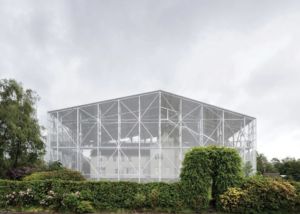
In 1902-1904, Charles Rennie Mackintosh, the founder of the Art Nouveau style in Scotland, designed and built Hill House in Helensburgh for the publisher Walter Blackie. The simplicity of the building contrasted with the unusual, jewel-like interior design, with customized furniture designed by the architect and his wife Margaret Macdonald. During the construction, to give the stone house a smooth white finish, Mackintosh used a new material to cover the exterior walls - Portland cement, which, as it turned out, was not suitable for the strong winds and rains of the west coast of Scotland. The walls began to absorb moisture almost immediately, which eventually put the building's integrity at risk. The restorers concluded that it could take up to three years to dry, and the subsequent restoration program would last up to seven years. The National Trust of Scotland, which has owned the building since 1982, decided not to wrap it in scaffolding but to use a 197-ton structure with a galvanized steel roof and transparent curtain walls - a stainless steel chainmail. The chainmail membrane protects against rain and allows air to enter, which facilitates the drying process. (The structure was designed by London-based architects Carmody Groarke. At the same time, the development of a long-term restoration plan and traditional excursions for visitors continue.





Будьте з нами в соціальних мережах